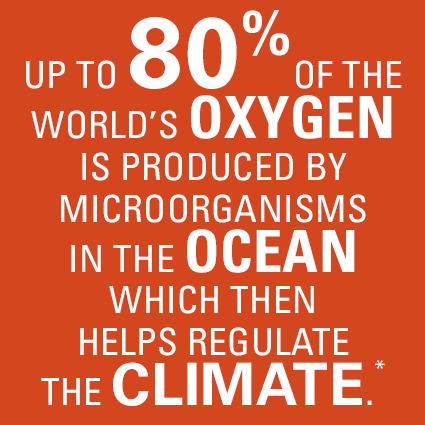A Good Catch is our sixth top trend of 2021. The focus of this theme is highlighting ways fishermen, chefs and manufacturers are working in tandem to support the health and sustainability of our oceans while meeting consumer demand for seafood. We’re dedicated to educating ourselves and sharing what we discover with you to create a more sustainable world. A recent webinar presented by Ocean Wise titled "Navigating Solutions to Overfishing with Ocean Wise Seafood,” provided a great overview of this topic and action items to combat the issue.
Overfishing is simply removing too many fish from the ocean within a given time frame from which the breeding population cannot adequately recover. Overfishing has been a problem throughout the world for 40 years, creating a ripple effect that threatens so much more than a fish species. Underpopulated species effect the biodiversity found in the oceans’ ecosystems, which in turn hinders the health of the ocean. The health of the ocean is essential to the health of the rest of the planet. In fact, up to 80% of the world’s oxygen is produced by microorganisms in the ocean which then helps regulate the climate.* Beyond the environment, overfishing puts the livelihood of many at risk. Between fishing professions and those jobs subsequent to catching the fish such as processing, transportation, and distribution, several hundred million workers are involved in the fish industry worldwide. For the 2.8 billion people who live in coastal communities, it goes beyond just occupations and could dismantle the societies that are so intertwined with the ocean.

The weight of overfishing doesn’t stop there. Fish is such a healthy food source for those all over the world. It’s imperative to fight for healthy oceans that can provide nutritious fare. As Lasse Gustavsson, CEO and President of Ocean Wise, shared during the webinar, “Fish is good food. We will do ourselves and the planet a big favor if we replace some of our red meat with more sustainable fish dishes. And also, by rebuilding fish stocks, more people can eat fish and seafood. Almost half a billion people get their main meal from the ocean every day today.” What an impact sustainable seafood can make on our people and planet as a whole.
Illegal, unregulated, and unreported (IUU) fishing operations are a major part of the overfishing problem. These fisheries have no management, oversight, or enforcement. It is estimated that a third of the fish pulled out of the ocean are from these IUUs. Without awareness of these fisheries’ activities, it becomes difficult for organizations and national/regional departments to conserve, manage, and work towards sustainability goals.
So where should we begin to ensure oceans stay healthy? Gustavsson said, “change is only possible when many people want change.” And to want it is not enough. We all must take action in order for change to occur. There are three key points that serve as a great starting line for what we all can do at home and in our operations to bring change:
1.) know what species you’re purchasing or eating;
2.) know where that species is coming from;
3.) know how it was caught or farmed.
Asking the right questions and responsibly making decisions based on the answers ensures you are doing your part in restoring the oceans, and in turn, building a better life and future for billions across the globe. For more on menuing sustainable seafood, listen to Chef Scott Gilbert’s recent podcast episode here. Do right by our planet, and of course, stay true to the food.
CRAVING MORE? CHECK OUT THESE SIMILAR POSTS